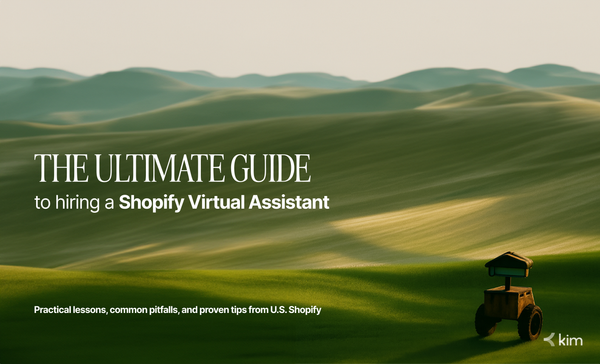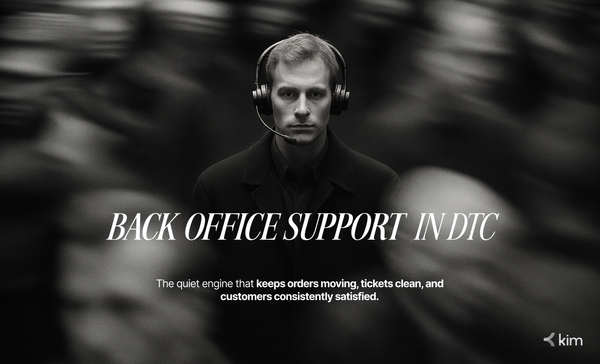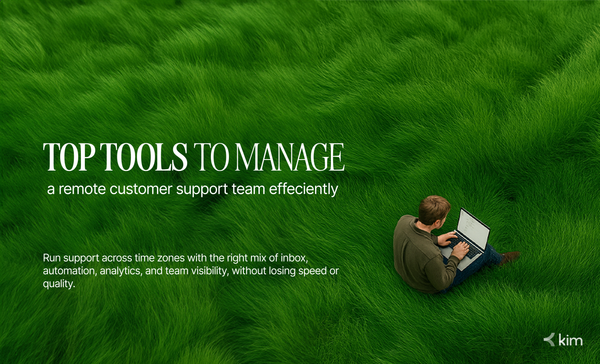Hire Customer Support or Use AI? Here’s How to Decide
If you're running an online business, especially on platforms like Shopify, you’ve likely hit this moment:
“Do I hire a customer support agent… or do I automate with AI?”
It’s a real question. One that gets trickier as you grow. Because support isn’t just about solving problems. It’s about how those problems are solved, fast, kindly, and in a way that makes customers want to come back.
Let’s break it down: when does it make sense to bring in humans? When can AI do the heavy lifting? And is there a smarter in-between?
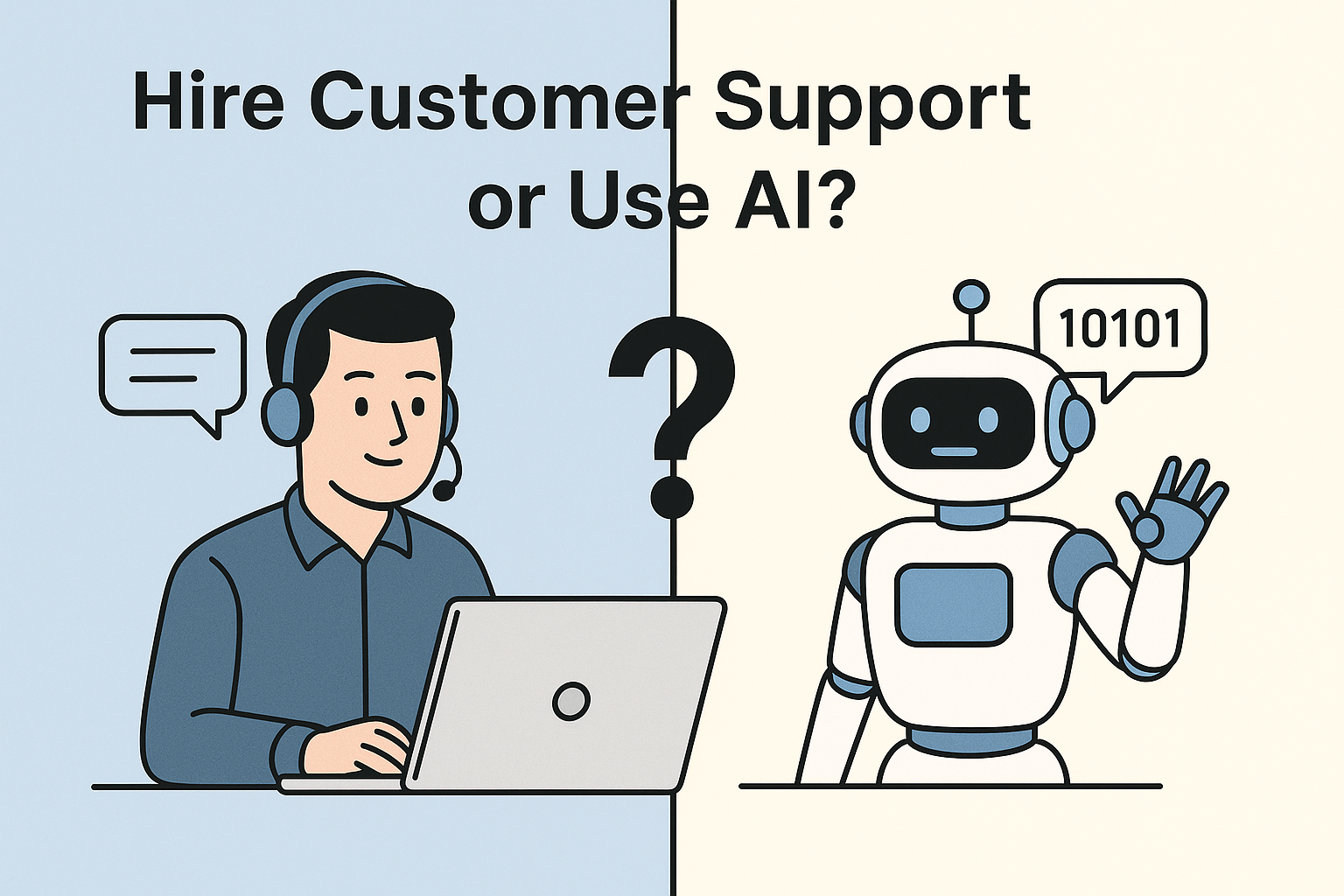
Start With the Real Question: What Do Your Customers Actually Need?
Before jumping into job listings or chatbot platforms, look at your current support flow. What kinds of questions are your customers asking?
Most customer queries fall into 3 buckets:
- Simple, repetitive tasks – “Where’s my order?” / “How do I return this?”
- Slightly complex, needs context – “I got the wrong item” / “I applied a coupon but it didn’t work”
- Emotionally charged or technical – “This product didn’t work and I’m really disappointed” / “There’s a bug in your app”
Here’s the thing:
- Bucket 1 is great for automation.
- Bucket 2 is where a blend works well.
- Bucket 3? That needs a human touch.
So before you decide anything, take stock. Go through your last 100 tickets and sort them. What % are routine? What % are emotional or technical? That will already tell you a lot.
When Hiring Customer Support Makes Sense
Hiring a dedicated customer support rep isn’t just about offloading work, it’s about investing in trust.
Here are a few signs it’s time to bring someone on board:
1. You’re spending too much time on support
If you're the founder or part of a lean team, support might be eating into your time to grow the business. If it’s taking up more than 1–2 hours a day consistently, it’s time to delegate.
2. You’re seeing more emotional or edge-case tickets
As your customer base grows, so do the expectations. More people = more chances something will go wrong. And those moments, if handled well, can create brand loyalty for life.
3. You care deeply about brand voice
Let’s face it, bots aren’t great at sounding like you. If your brand has a quirky, premium, or empathetic tone, humans are better at staying in character.
4. You want to improve customer retention
People don’t just remember what they bought. They remember how they were treated. A great human interaction can turn a one-time buyer into a lifelong customer.
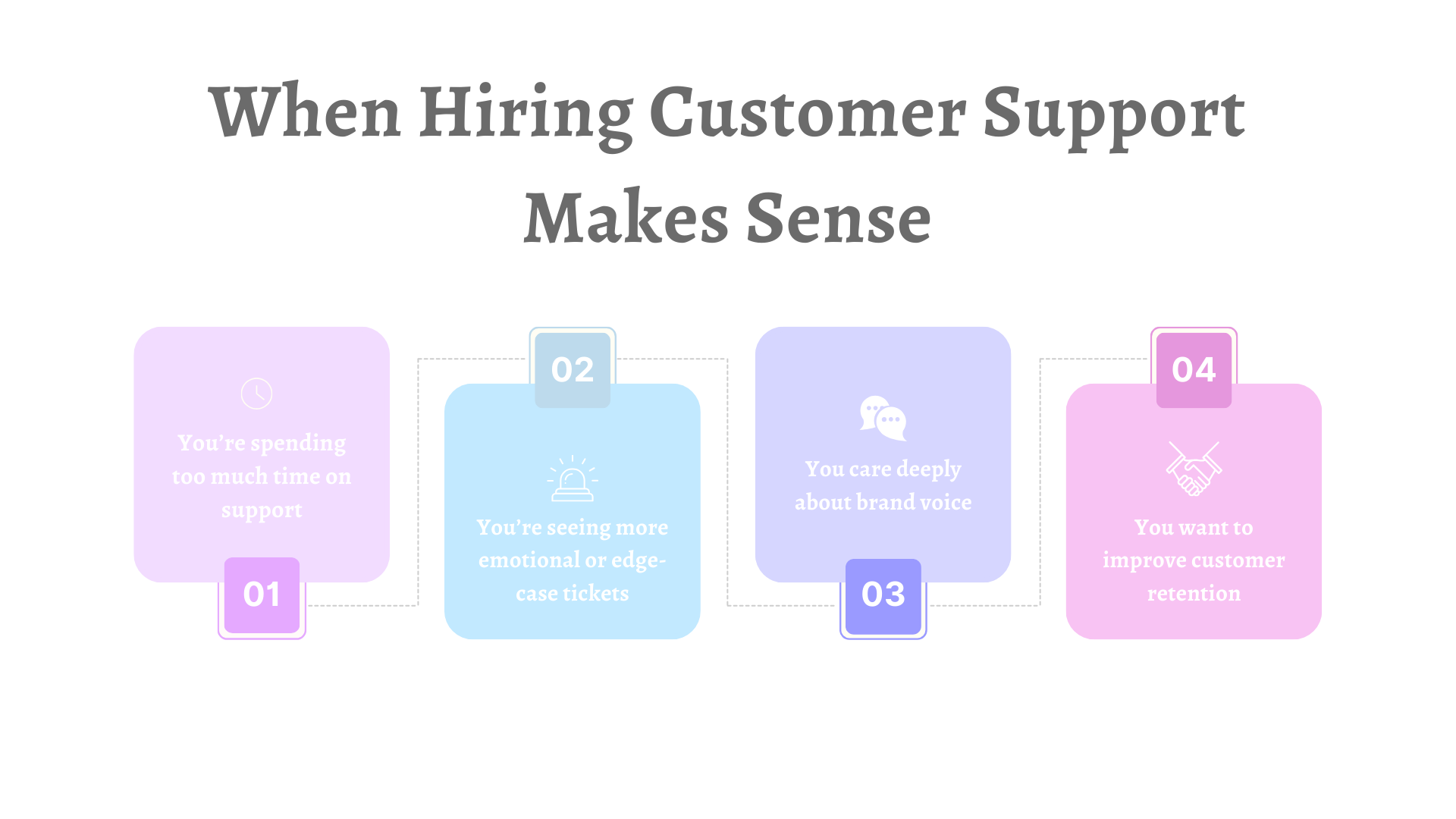
When AI or Automation is the Better Choice
That said, hiring isn’t always the right answer, especially if:
1. Most of your queries are repetitive
Order tracking, return policies, size charts, subscription changes… these don’t need a human every time. AI tools (like chatbots, auto-replies, and helpdesk routing) can handle them faster and cheaper.
2. You need to offer support 24/7
Hiring around the clock gets expensive, fast. But AI doesn’t sleep. Even basic bots can bridge that gap overnight or during peak sales events.
3. You’re working with a tight budget
Hiring even part-time help costs money. If you're early-stage, it may be more realistic to automate what you can, then hire when the ROI becomes clear.
4. Speed is a big driver of conversions
If your products are impulse buys or your customers are impatient, faster responses mean more sales. AI can drastically reduce first response time, which matters more than you might think.
Not One or the Other: Why Hybrid Support Often Wins
Here’s the good news: it’s not about choosing one side forever.
A hybrid model, where AI handles the basics and humans handle the nuance, is often the best of both worlds.
Let’s walk through what that might look like:

Step 1: Automate the obvious
Set up automated replies for common queries like:
- “Where’s my order?”
- “How do I cancel?”
- “What’s your return policy?”
Use tools that let you connect these replies to your order system, so they pull in real data.
Step 2: Add escalation triggers
For anything the AI can’t resolve, or anything with negative sentiment (like “angry” or “frustrated”), route the conversation to a human.
This way, your team doesn’t waste time answering “when will this ship?” 100 times a day, but can quickly step in when emotions run high.
Step 3: Let humans handle the edge cases
Refund requests. Product failures. Feedback from longtime customers. These moments are too valuable to hand over to AI. Assign these to trained team members who can offer real empathy and flexible solutions.
Crunching the Numbers: Cost, Speed & Satisfaction
Let’s compare across three models:
| Metric | All Human | All AI | Hybrid |
|---|---|---|---|
| Speed | Slowest | Fastest | Fast, with empathy |
| Cost | Highest | Lowest | Optimized |
| Customer Satisfaction | High (if done well) | Mixed | High (if balanced) |
| Scalability | Harder | Easy | Smart scaling |
Bottom line? Hybrid support often gives you the best ratio of cost to quality.
Common Mistakes to Avoid
Over-automating too early
It’s tempting to automate everything. But if a bot responds to a complaint with “Thanks for reaching out!”, you’re doing more harm than good.
Not training your team (or your AI)
Even if you're using AI, someone needs to review how it's performing. Set guidelines for tone, escalation, and edge-case handling.
Thinking of support as a cost center
Support is marketing. It’s retention. It’s where customers form their most intense opinions of your brand. Don’t skimp on it.
How to Make the Right Call (Checklist)
Ask yourself:
- Are you getting more than 20 support tickets a day?
- Do most of them ask the same 3-5 questions?
- Are you or your team spending more than 1 hour/day on support?
- Do customers expect fast responses or emotional engagement?
If you answered “yes” to the first three, start with automation + part-time help.
If you said “yes” to all, a hybrid model with some full-time human support might be ideal.
Final Thoughts
You don’t need to choose between bots and humans like it’s a battle.
You can use AI to handle the repetitive stuff, and let humans do what they do best: care, listen, and solve problems with nuance.
As your business grows, your support model will probably grow too. Start small. Add tools that save time. Bring in humans when they’ll have the biggest impact.
And remember: a thoughtful, helpful support experience is one of the most underrated drivers of growth out there.
If you have already made the switch to AI, human, or hybrid?
We’re curious how it's working for you. Drop us a note, or share your experience with the team at kim.cc.

